The donor base must diversify to meet patient needs.
Many individuals battling conditions like sickle cell disease, thalassemia, and certain cancers rely on regular blood transfusions for their treatment. The process of matching blood for these frequently transfused patients can often go beyond just blood type compatibility - it involves finding units of blood closely matched to their unique antigen profile. This can only be done through finding blood donors from similar ethnic backgrounds, highlighting the need to have a blood supply that is as diverse as the nation that depends on it.
The Problem
- Only 12.2% of whole blood donors come from minority donors. The data shows a substantial 35.4% decrease in minority donors in 2021 compared to 2019, signifying the urgent need to increase the number of donors across underrepresented minority groups.
- Encouraging younger generations - a more diverse demographic - to donate is also essential. As the latest U.S. Blood Donation Statistics and Public Messaging Guide highlights, 7 percent of blood donations come from individuals 65 and older. Even more concerning, there was a 40.7 percent increase in donors aged 65 and older in 2021 compared to 2019, highlighting the need for focused recruitment efforts on younger generations. This lack of donation at younger ages is a concerning indicator for whether these individuals will donate later in life at a rate sufficient to replace donors in aging generations.

Take Action
America’s Blood Centers is working to expand the blood supply, including through the introduction of legislation that would fund a pilot program providing grants to blood centers for local program and increasing antigen testing to ensure a better-matched blood supply.
Add your voice to these efforts by sending customizable, prewritten messages to your Members of Congress - it takes only minutes but could have a lasting impact.
Latest Developments
Resources
Sickle Cell Disease Coalition
America's Blood Center is a proud member of this collaborative initiative dedicated to amplifying the voice of the Sickle Cell Disease stakeholder community to enhance outcomes for individuals with SCD.
National Heart, Lung, and Blood Institute
Find resources promoting blood donation designed for diverse communities to help save lives, particularly for people with certain blood types and diseases.
Giving=Living Campaign
Empower communities to save lives through blood donation with the Department of Health and Human Services' Giving=Living campaign materials and tools.
The Georgia Health Policy Center
The Georgia Health Policy Center (GHPC) is a trusted leader in health policy research and implementation, striving to improve communities' health and well-being through evidence-based solutions.
The Centers for Disease Control and Prevention
The official website of the Centers for Disease Control and Prevention (CDC), providing crucial information on monitoring blood safety in the United States.
The American Society of Hematology
The American Society of Hematology (ASH) is the world’s largest professional society of clinicians and scientists who are dedicated to conquering blood diseases.

